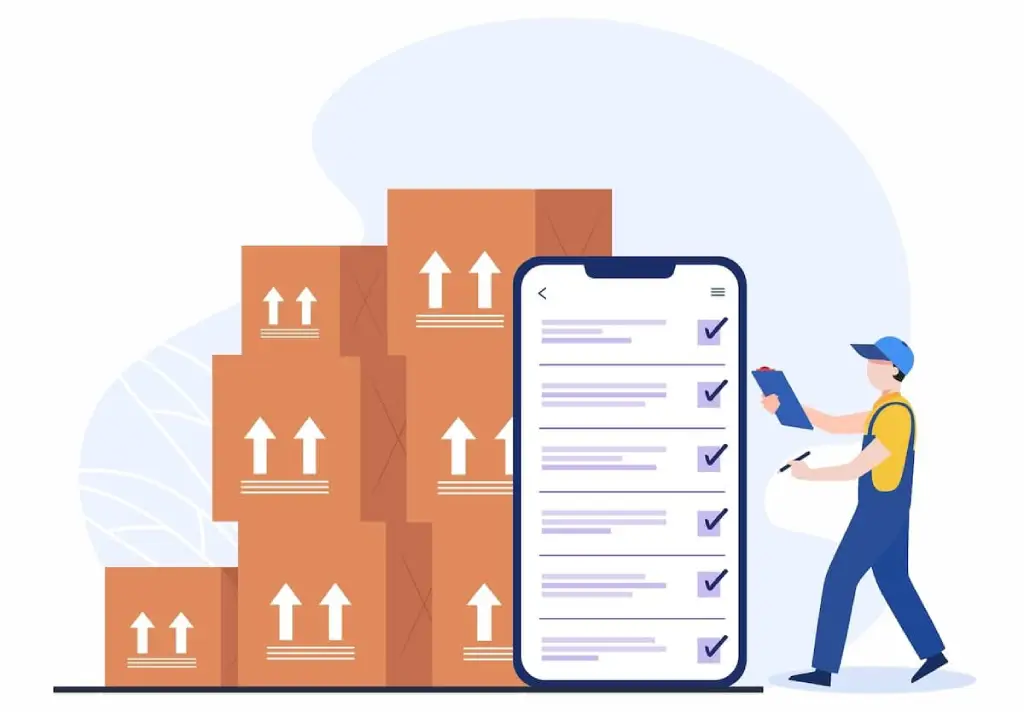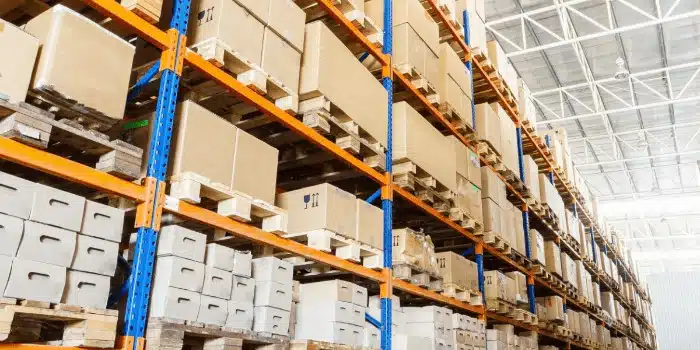
Does your warehouse look a bit cluttered? Have you been looking around the warehouse floor to find room for new, incoming material? If that’s the case, you may not be making the most out of your warehouse storage space possibilities.
If you’re managing a 3PL (third-party logistics) or warehousing business, chances are you know how important space is for warehouse operations. In this blog post, we’ll explore some practical steps that can help with not only warehouse space management, but warehouse optimization as well so you can better meet demand and remain profitable. Read on to learn about planning efficient layout strategies, improving flow for quicker product turnaround times, and leveraging technology for automation and cost containment to maximize warehouse space utilization!
Why Warehouses Run Out of Storage Space
With U.S. distribution centers hitting peak warehouse capacity in recent years finding ways to efficiently utilize available storage space has become essential for success in an increasingly competitive environment. But why? Warehouses and 3PLs have struggled to keep up with storing demands due to a variety of factors, such as:
Sudden Influx of Inventory
Most warehouses have had to accommodate the rapid e-Commerce order growth over the past several years. Other reasons for an uptick in inventory include higher product demand (toilet paper, hand sanitizer, gloves, etc.) that is unanticipated, seasonal inventory, and the arrival of late, post-pandemic shipments that finally arrived. One recent example of this is from Funko, who chose to destroy $30M of inventory because of storage costs and efficiency issues moving around products to fill orders.
Poor Inventory Management Practices
If warehouse managers don’t regularly review stock levels or use an outdated inventory management system, they will be faced with overstocking situations and may be storing obsolete inventory that is taking up valuable warehouse space.
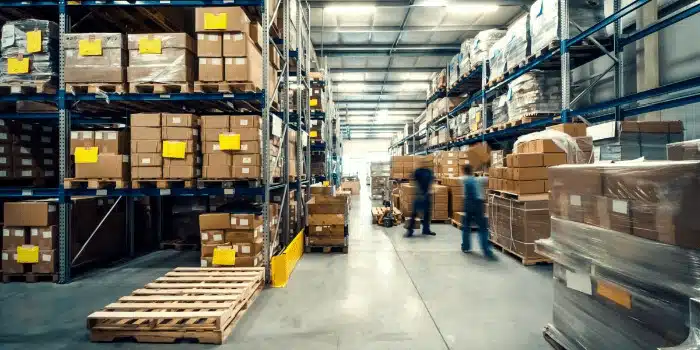
Poor Warehouse Layout
Suppose a distribution center is poorly designed and has not implemented a warehouse storage space management plan or even evaluated its warehouse optimization. In that case, there may not be enough space for new products or materials.
Lack of Automation
Warehouse space can run out quickly if a facility doesn’t implement even the easiest form of automation like warehouse management system software or RF scanners. In addition, manual processes are time-consuming, leave room for human error, and waste valuable labor hours that could be better put to use on multiple tasks to improve warehouse performance.
The Importance of Improving Your Warehousing Optimization
Warehouse optimization means more than just having the right amount of space. It’s also about using that space as efficiently and cost-effectively as possible while implementing technology to improve productivity. As the modern landscape of the supply chain continues to evolve, so too does the need for more advanced technologies that help streamline processes and minimize wasted time in warehouses.
If your warehouse space optimization could use some improvement, you’re not alone in the supply chain industry. Many warehouse and 3PL managers find themselves struggling to keep up with ever-changing customer demands while also facing budget constraints – all while striving for great customer service and remaining competitive. It takes careful planning to develop a warehouse optimization plan, but it will pay off in the long run with better inventory control, additional space, and operating efficiency.
Evaluate Your Current Warehouse Space and Workflow
The first step in optimizing your warehouse space management is to understand how you’re currently using the space. Take a look at your entire warehouse, its current layout, and how each area is used in your daily warehouse operations to determine where you can free up more space.

1. Calculate Your Current Warehouse Space Utilization
By measuring the cube utilization of your warehouse space, you can determine how efficiently and cost-effectively you’re using the space. This allows you to identify areas that can be optimized or reorganized for better performance.
Reliable Planet offers this four-step process to easily identify your utilization rate:
Calculate Total Warehouse Size
- Begin with the total facility square footage.
- Subtract any space that isn’t used for storage including restrooms, machine shops, lunch rooms, and office areas.
- Multiply the remaining square footage by the warehouse’s clear height. It’s the distance from the finished floor of the warehouse to any overhead object.
- The result is your total warehouse size.
Calculate Storage Space Size
- Multiply the length and width of the outside dimensions of storage racking by the height of the highest load in that area. The same formula should be applied to the floor space used as a cache.
- It’s important to note that the height of the highest load may not be the same throughout the facility. If you have one area with a 26-foot load height and another with a 20-foot load height, calculate them separately and then add them together.
- The result is the cubic volume for your storage area size to be considered as your potential or maximum space based on your current setup.
Analyze Potential Storage Area Space
- Divide your storage area size by the total facility size. Then multiply that result by 100. What percentage do you get?
- This number represents the amount of your warehouse that can potentially be used for storing inventory. Your percentage should be between 22-27 percent. This range allows enough room for warehouse employees to efficiently pick, load, and unload without wasting available space but utilizing typically free space. If your percentage is under 22 percent, your space could be improved by optimizing your rack locations, floor storage, and aisle width or adding mezzanines above work areas. It’s important to note that warehouse aisles must be wide enough to accommodate material handling equipment with loads.
Calculate Space Utilization
- Add the volume of all the products that are stored in your facility. Use your data collection and report features of your warehouse management system (WMS) software to provide that figure.
- If you’re using warehouse management software, simply divide the total volume by the size of the storage area and multiply by 100. The final number is your space utilization rate.
Not all 3PL facilities and warehouses are designed or operate the same, use the same storage containers, or store and distribute the same type of products. Many warehouses have different accessible locations with narrow aisles, therefore typically moving orders to a staging space or the shipping doors. The steps to calculate how you can attain warehouse optimization are the same to determine how much space you can use for a storage system that helps in operating your facility efficiently.
2. Identify Available Space on the Warehouse Floor
Second, look for any areas on the warehouse floor that are not used to their fullest potential. If there are shelves, racks, or additional space not being utilized efficiently, consider using them to store more items or better organize the existing inventory.
3. Analyze Your Warehouse Operations Workflow
Lastly, your warehouse manager should ask the following questions: Are the most frequently shipped items close to the packaging area and/or loading dock? Are SKUs for kitting located in the same area? Is your pallet build area near the shipping area? Is cross-docking an option to eliminate the need to store items? Answering these questions can help identify ways to streamline operations and improve space utilization.
Tips for Better Warehouse Space Management

Get Rid of the Junk
Distribution centers are often so busy with their day-to-day operations that they often overlook areas where junk has been collected. To increase storage capacity, clean out the obsolete inventory, toss the broken tools, recycle the scrap, and donate the old company holiday decorations to charity. It’s pretty alarming how many little things can collect over the years resulting in large piles and wasted space which is not good for warehouse optimization and limits storage capacity.
Look Up For More Free Space
Yes, look up! If your products and materials can be placed in storage racks and you currently have everything on the floor, it’s time to consider a better use of your vertical space rather than floor space. Vertical space is your friend when it comes to optimizing warehouses.
In addition to pallet racks, constructing mezzanines above production areas or shelving above dock doors can provide more space suitable for storage. The area could be used for lighter items like packing materials or other items not commonly used in large quantities or only once or twice a year.
Make the Most of Your Storage Racks
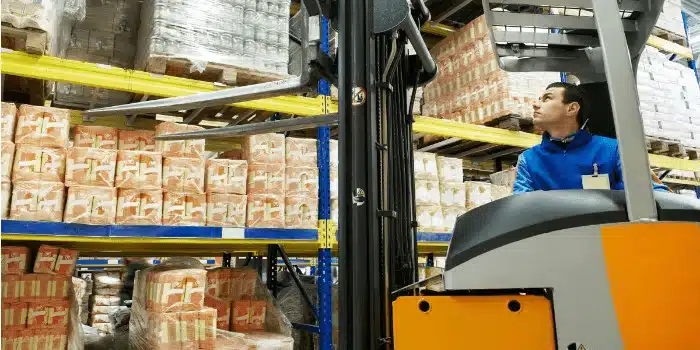
While we’re still looking up, if you have incorporated storage or pallet racks into your distribution center or 3PL, is that space fully optimized to accommodate the most product or materials allowable by rack specifications? Check out this valuable information from Reliable Planet on how to best utilize storage racks and increase warehouse capacity.
Reconfigure Aisle Widths
In some cases, the width between racks width can be trimmed down to allow for additional pallet racks for better space optimization. Don’t forget about allowing for the size and movement of forklifts and pickers and adhering to all safety protocols to protect your workforce.
Choose the Right Storage System for the Product
Every product cannot be stored the same way due to size, weight, or regulatory requirements. However, warehouses or 3PLs could increase their storage space by reducing pallet size or height, using wire baskets, placing loose or small items into a box or bin, shrinking box sizes, and adding shelving to bare walls.
Redesign Warehouse Travel Flow
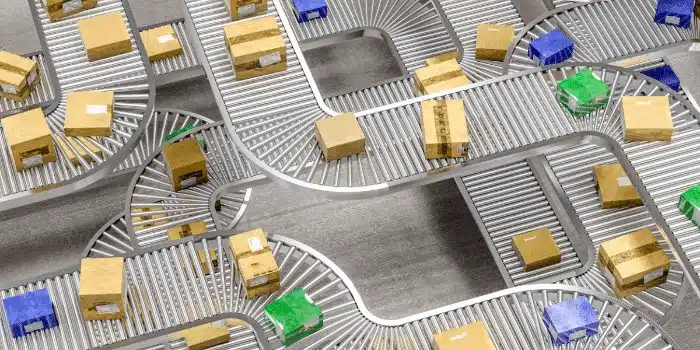
Implement flow-through design principles to eliminate any unnecessary movement between departments or steps in the picking, packing, and shipping process. For example, by locating your most frequently shipped products near the packaging area, or kitted items next to each other, warehouse employees will spend less time picking and traveling throughout the distribution center, which will increase productivity. The implementation of new technology and automation like conveyors that move inventory through the warehouse and scan products to deposit at each order’s pallet.
Consider Cross-Docking
To run your warehouse efficiently, try adding new processes like cross-docking to your space management plan can reduce your product storage due to the quick turnaround time. It also saves time and money that would otherwise be spent on labor for picking, packing, and shipping.
Adhere to Inventory Storage Requirements
When developing your optimization plan for warehouse storage, it is important to remember that products must be stored as required by federal, state, and local government regulations. These include items identified as hazmat, climate-controlled SKUs, refrigerated or frozen products, and flammable inventory.
Implement WMS Software
Adding WMS software like Argos to your warehouse storage optimization plan instead of using excel spreadsheets or other methods can help reduce storage space by managing warehouse inventory more efficiently. With real-time tracking and information on the location and age of products, good WMS software will help you identify excess inventory and obsolete SKUs that can be removed to save space. Warehouse management software can also increase employee productivity and efficiency resulting in cost savings for the company.

Adding Automation for Efficiency
As noted above, adding WMS software can increase warehouse efficiency. Other automation technologies to consider include RF scanners, labeling equipment, voice picking, AMRs, and conveyor systems can all increase employee productivity and save your 3PL or warehouse time and money.
Maximize Productivity With Argos Software

When it comes to maximizing the potential of your warehouse capacity, Argos is here to help! Our innovative software helps to optimize warehouse processes with real-time data and easy implementation of new technologies. Our user-friendly interface makes managing your inventory a breeze for both seasoned professionals and newcomers alike.
Not only do we offer a premiere software solution for warehouses, but we have also dedicated modules designed for the specific needs of 3PL providers. Examples of our 3PL features include real-time inventory visibility, flexible storage and transaction billing, freight management, accounting, analytics, and reporting.
Our expertly trained staff are dedicated to the planning, customization, and support that most distribution centers desire. Contact us today to learn more about how our powerful tools can help you save space, time, and money!



